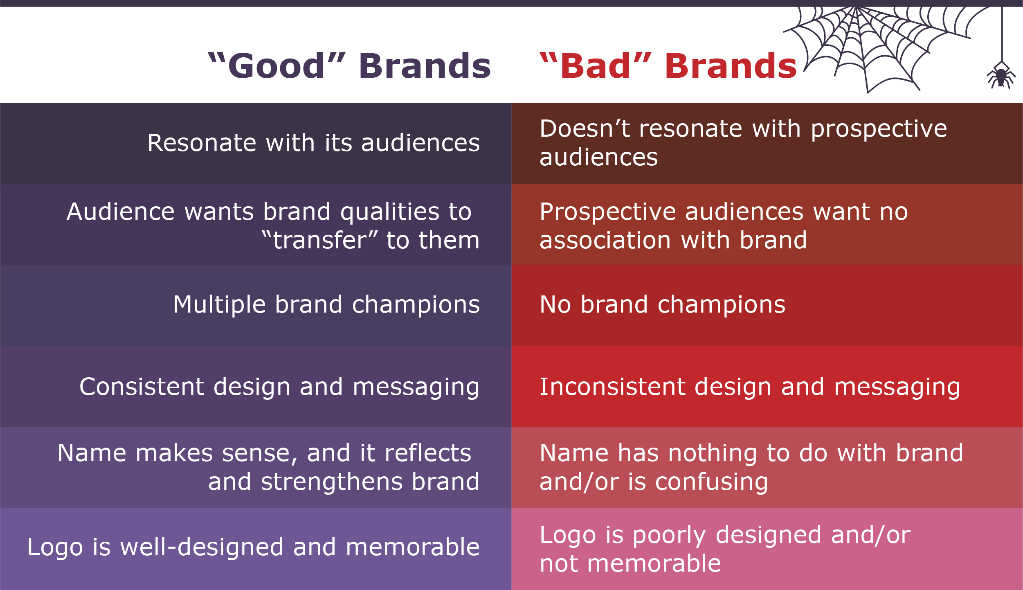27 Jun Building a Successful Brand
Branding is important in building your company! A brand usually includes things like a logo, company name, color schemes, fonts, slogans, your message, and the advertising methods that you use. Branding refers to how people perceive your company. Even if your business provides excellent customer service and premium products, poor branding could cause your business to have a bad reputation. In a recent survey, 91 percent of consumers around the world ranked “communicating honestly about products and services” as the top influence on whether or not they do business with a company.
And, over 90% of small-business owners believe that having a unique brand that differentiates themselves from the competition is very important.

Define how you want to be perceived
When your customers have finished using your product or service, how do you want them to describe their experience? If you own a restaurant, for example, what do you want them to say?
- “Wow, this restaurant has the largest portions in town. It’s great!”
- “You really feel as though you’ve been invited for a traditional Italian family dinner. The dishes are simple but so delicious!”
- “The service is quick and the food is OK, but the price is unbeatable!”
See your brand as your promise to your customers – a promise that’s different from your competitors’.
Organize your business based on this promise
Keeping the promise that sets you apart from your competitors implies that you’re doing something more than what they’re doing. The restaurant that wants to be recognized for its unbeatable prices, for example, will have to find a way to maximize the number of customers served per table in one evening. The margin per individual customer will be less, but the number of customers will make up for it.
In other words, your brand will greatly influence the winning formula that you’ll base your business on.
Communicate your promise
All of your marketing material – from the colors of your logo to your website text – must be developed as a function of this promise. What you say n Facebook or LinkedIn must be aligned with this message, as must the decoration of your premises.
It’s at this stage that your brand becomes central to your advertising campaigns. What’s more, your ads will be even more effective, since you’ll have a clear message to convey.
Be consistent
After defining how you want to be perceived, then organizing your business based on this perception and communicating this promise, you must be consistent. Apple, for example, is recognized for making products that are both elegant and innovative: it can’t afford to launch a new phone that’s unattractive, or a new tablet that’s technologically behind, because that would mean breaking the promise it has made to its customers.
It all Starts with a Story
History and heritage are vitally important to authenticity. A startup business that uses time-honored manufacturing methods will be perceived as authentic because those methods have a history. To create an authentic brand, focus on the story, your story, behind your business:
- Why did you start your business? Why are you passionate about it?
- Who helped you grow your business? What did they bring to the company that changed it or helped it reach your goals?
- What challenges has your business faced, and how have you overcome them?
- What’s your ultimate vision for your business?

Share your brand personality
You and your employees are part of your business brand, so don’t try to put on a false front. Post photos and short biographies of your employees on your website– but don’t make them boring; have some fun with it. Share photos of the team at work on social media. Write a personal message in every email newsletter you send. Be real, and encourage your team to do the same.
Be part of your community
Whether your community is local, or a far-flung web of people connected by the Internet, you need to be invested in that community to build an authentic brand. People like to buy from people they feel a connection with. Find out what your community cares about, what they want from your business, what their passions are. Then deliver on it.
Be honest
Your authentic brand seems so authentic if customers find out you’re not living up to the standards you promote. You can’t make ending exploitation your cause, then sell products made with child labor. What if customers find out you’ve been less than truthful? Admit what you’ve done wrong. Owning up to mistakes can actually make customers trust you more, not less. You’re showing vulnerability, and that makes you authentic.
A business doesn’t have to be small to be authentic — large brands like Samsung and Apple have topped several lists of “the most authentic brands.” However, as a small business, you do have a head start at conveying authenticity.
Bad Branding
Bad branding can sometimes be worse than no branding at all. The same way that a bad reputation is worse than no reputation at all, bad branding can actually be worse than zero. A branding mistake—if it’s bad enough—can send you plummeting to the complete demise of your business. Bad branding can come in the way of a poorly designed logo, ignoring social media, or having a bland website. Be consistent with your messaging. And, pick a great designer – take full advantage of their expertise. Involve your whole team in decisions, not just your design team.
Here’s a great visual comparing “Good” vs “Bad” branding

The idea in developing a brand is to develop trust. That said, don’t miss the boat on this very important part of building your business. Your customers must no longer see your brand as a promise but as a reality. Consistency is often the hardest part, but the one with the greatest rewards.

Sorry, the comment form is closed at this time.